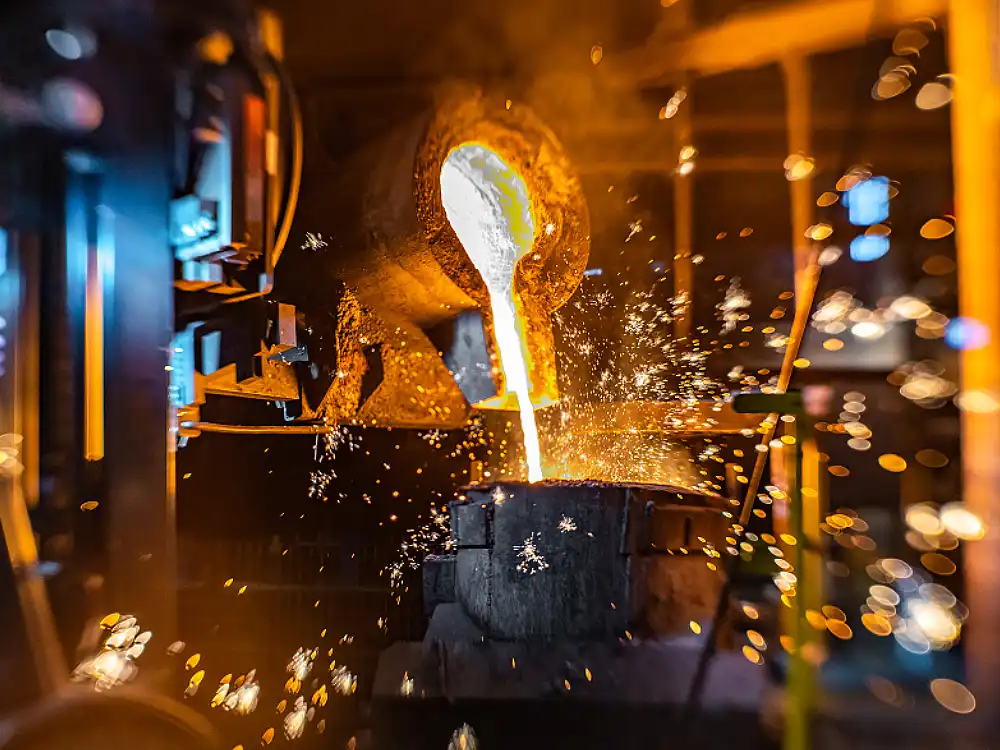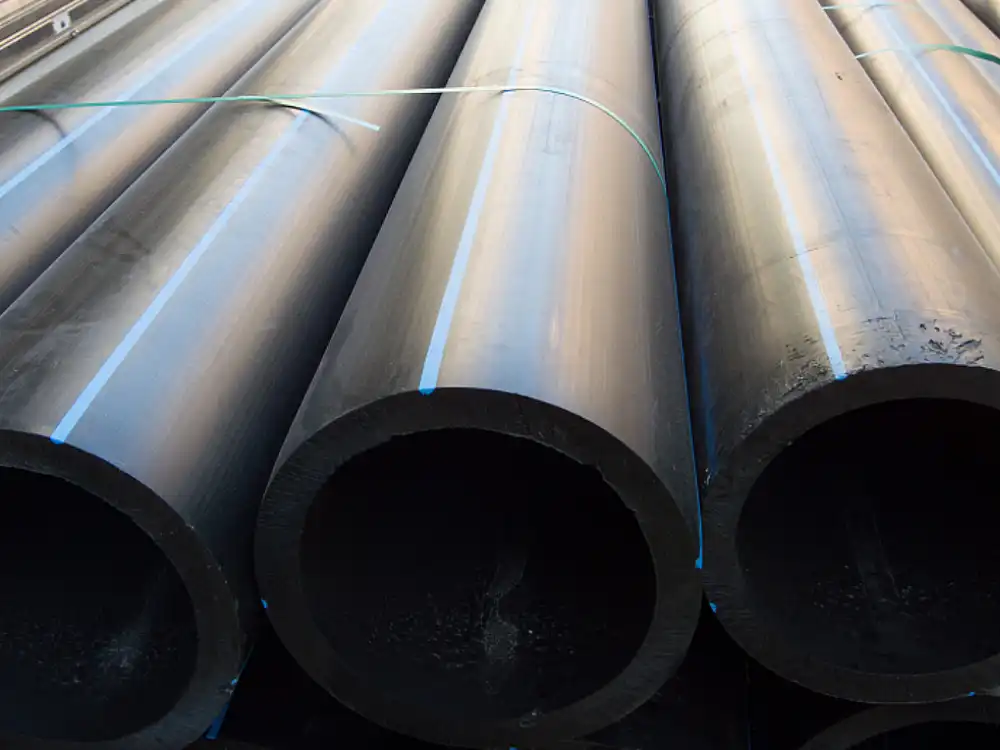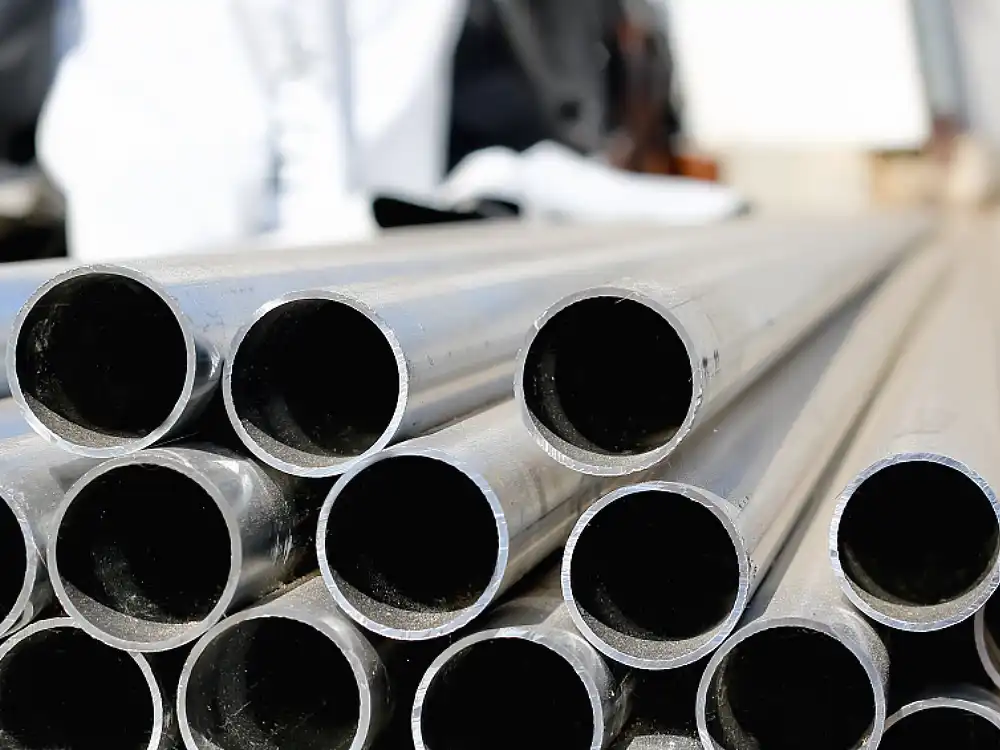
Introduction
When you remove impurities from an iron ore, you get iron. And when you combine iron with other alloying materials like carbon, you get steel.
Steel is an iron alloy, meaning its primary composition is iron. All steels also contain carbon, typically at 2% or less. Steel’s versatile nature allows it for different types and steel material grades.
There’s so much more to know about steel than just what steel is composed of. Below, we explain the types, subtypes, and classification and grading standards for steel.
Different Types of Steel
Steel’s moldability into different types by varying its composition further improves its versatility. Having different kinds of steel gives it specific properties suitable for a particular application.
Here are the four main different types of steel:
1. Carbon Steel

Carbon steel is named as such due to its higher carbon concentration. It contains higher C and minimal traces of other elements, making carbon steel simple but very durable.
Generally, many regard carbon steel to be the strongest steel type. This is why components that need to be tough use such steel material. A few carbon steel applications include cutting tools, cookware, casting, and heavy machinery. Today, carbon steel occupies 90% of the total steel manufactured worldwide. In the US, approximately 85% of the full steel produced is carbon steel.
However, while carbon steel is often confused with cast iron, they remain different. Carbon steel has more or less 1% carbon but never exceeds the 2% threshold. In contrast, cast iron contains higher carbon content at 2% to 3.5% in weight. The higher carbon content in cast iron produces rougher grains and brittleness.
Types of Carbon Steel
Carbon steel is classified into three subtypes based on its total carbon content. These grades serve different purposes and have different properties.
- Low Carbon: Low-carbon steels are also called mild steel. They contain up to 0.30% carbon. This lower carbon content makes mild steel ductile and more malleable. Low-carbon types of steel are the cheapest and most commonly used in pipes, food cans, and wires.
- Medium Carbon: Add from 0.31% to 0.60% carbon, and you’ll get medium-carbon steel. This subtype sometimes contains manganese between 0.6% and 1.65% in weight. With a higher carbon percentage, medium-carbon steels are less ductile and stronger than low-carbon. They are used to make crankshafts, gears, forgings, and railroad tracks.
- High Carbon: With a high carbon content of 0.61% but not exceeding 2.0%, high carbon is the toughest type. However, compared to lower carbon steel, this one is more brittle and more challenging to weld. Due to its hardness, it is often used for abrasion-resistant components.
2. Alloy Steel
In carbon steel production, you combine iron and carbon to produce the material. However, carbon steel is combined with an alloying element to create alloy steel. In essence, alloy steel combines iron, carbon, and one or several alloying elements.
An alloy’s specific properties will depend on what element it contains and how much it contains. Depending on the demands, an alloy steel may have 1% to 50% of an alloying element from its total weight.
But, since not all alloying elements are as abundant as iron or carbon, alloy steel can be more expensive. Nonetheless, such elements will produce very specific properties for special applications.
For instance, a titanium alloy can be very costly. But it guarantees extreme tensile strength and hardness even at extremely high temperatures. Hence, titanium alloy is often limited to high-end purposes like jewelry, medical devices, and spacecraft.
Here are other common alloys and their properties.
- Copper: An efficient heat conductor that is corrosion-resistant. Ideal for electrical wiring.
- Aluminum: High flexibility, heat resistant, and lightweight.
- Silicon: Improved elasticity due to the element’s soft-naturedness. It is malleable and magnetic, ideal for electrical transformers.
- Manganese: Tough and impact-resistant, making it ideal for safes and bulletproof cabinets.
3. Stainless Steel

Stainless steel is one of the market’s strongest and most distinguishable types of steel. It is often molded into components that need to be rust-free. We often see this steel in medical equipment, tools, cutlery, and utensils.
Stainless steel’s reflective and luster finish is credited to its primary alloying element, chromium. The chromium content of such steel usually ranges from 10.5% to 30% of its total weight. When polished, the higher the chromium content, the shinier the steel’s surface.
Aside from its aesthetics, stainless steel is also durable, weldable, and hygienic due to its cleanliness. Here are its common subtypes:
- Martensitic Stainless Steel: Possesses the high tensile strength, hardness, and impact resistance qualities of stainless steel. But martensitic stainless steel possesses lower corrosion resistance than other varieties. It is also the least common type.
- Ferritic Stainless Steel: This is considered one of the most common stainless types of steel. It remains less expensive due to lower nickel content. Unlike an austenitic stainless, this one is magnetic.
- Austenitic Stainless Steel: Known as the most common category and has higher chromium and nickel concentrations. Due to this, austenitic stainless has higher corrosion resistance and non-magnetic properties.
- Duplex Stainless Steel: Duplex alloys combine ferritic and austenitic steels. This metal inherits duplex, which is the two alloys’ high corrosion resistance, ductility, and strength. Duplex alloy is often used in gas pipeline and chemical industries.
4. Tool Steels
This steel is a high-carbon metal that is specific for manufacturing tools, hence the name. The presence of alloying metals like tungsten and cobalt makes tool steel exceptionally tough. This also helps the steel keep its shape after heavy and prolonged work.
The elements and tempering process make tool steel heat resistant and abrasive, which is ideal for high-impact applications.
Common Types of Tool Steels
- Water hardening: Water-quenched and the most affordable and standard material for everyday tools.
- Air hardening: It is hardened through natural air quenching. Only those containing metals that are supposed to be air-quenched must undergo this process.
- Hot working: Tougher tool steels are ideal for high-temperature applications like casting or forging. H-graded tools own higher alloying and lower carbon traces.
- Shock resisting: Steel tools that are ideal for stress and low-temperature applications. Tools that can withstand high impact but have limited abrasion resistance.
- High speed: These are tools that are common for cutting. It is so named because it can cut faster than carbon steel. High-speed tool steels are divided into T-type (tungsten-based) and M-type (molybdenum-based).
Steel Classification Standards
Steel classification isn’t limited to its four types. Outside their classification anchored on elemental composition, steels can also be classified through the following:
- Finishing method
Steel can be hot-finished, hot-rolled, cold-finished, or cold-rolled, among other methods.
- Microstructure
Microstructure classes include martensite, ferrite, austenite, pearlite, cementite, and bainite.
- Production method
Steel is produced either through an oxygen furnace ( also called a blast furnace) or an electric arc furnace.
- Heat treatment
There are four types of steel heat treatment: tempering, hardening, annealing, and normalizing.
- De-oxidation process
De-oxidation ranges from slightly to fully de-oxidized and has four types: semi-killed, killed, capped, and rimmed.
Steel Grades & Standards
Material integrity is a top priority in the steel industry. So, to guarantee such quality, global steel production must be standardized. Industrial standards and grading in steel manufacturing come in two names: the SAE and ASTM.
- Society of Automotive Engineers (SAE)
SAE certification comes in four-digit numerical grading highlighting the types of steel, carbon concentration, and alloying elements content.
- American Society for Testing and Materials (ASTM)
However, ASTM uses alphanumerical grading to show the steel’s general category and specific qualities or properties.
Top Steel Grades
Also, steel grades are categorized as the best steels in the market. When grouped through types of steel, these are the best grades:
Carbon steel: SAE- 1020, 1045, 4130; ASTM- A36, A529, A572
Alloy steel: SAE- 4140, 4150, 4340, 52100, and 9310
Stainless steel: SAE- 304, 316, 420, and 410
Tool steel: ASTM- D2, H13, M2
Conclusion
Steel is made of iron, carbon, and alloy elements. What is the steel’s sought-after properties? Its versatility, practicality, and strength.
When you add varying amounts of alloyant to iron, you also create different materials with varying properties. This makes for the various classifications and grades of steel that allow steel to be flexible for different applications.
Today, steel is used in almost every area. Steel is present in car manufacturing construction, ornaments, arts, and the medical field. They are very practical materials and can be sustainably recycled.
